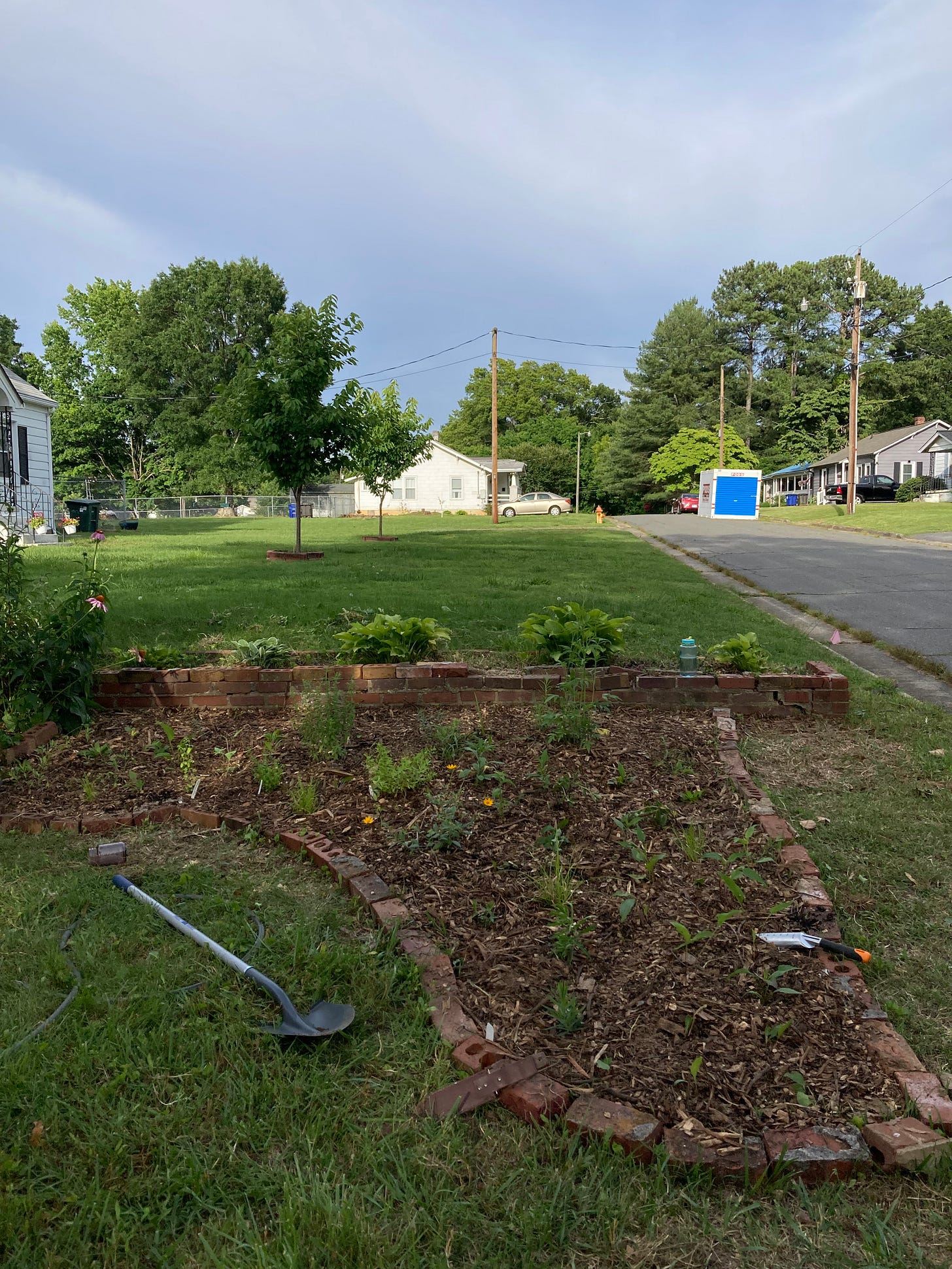Garden Plans: A Pocket Prairie
Talofa Friends,
I’m writing on a rainy Saturday evening. The rain has been steady for most of the day, with just a few breaks where the sun would peak through before the sky turned grey again. Our rain barrel is now full! This is incredibly exciting as we’ve been in a “severe drought” for almost 2 months, according to the U.S. Drought Monitor Map.
With temperatures reaching above 90F/32C most days the soil has been bone dry, holding hot air in its pores. This has sadly led to dead canes on one of our mature rose bushes, shriveled bean plants and stunted tomatoes in our raised beds, and a dead limb on our neighbor’s once-healthy tree. I learned another person in our community lost a 3-year-old cherry tree whose leaves all turned brown and died overnight. We are all consistently watering with hoses, irrigation systems, and the old-fashioned watering can but what we have needed is rain. More rain is expected tomorrow, it will be a blessing.
With global temperatures rising, drought is the new normal for many. So how do we deal? That’s a massive quandary for which many people have been creating brilliant solutions, including planting native gardens to create resilient ecosystems that hold and maximize moisture. I have seen this for myself as the one patch of our property that has survived and even thrived in this drought is our “pocket prairie.”
The Pocket Prairie
For my birthday last year, our friend Maegan gifted us a year-long process of designing, sourcing, and installing a pocket prairie. Maegan is a horticulturist in the Blomquist Garden of Native Plants at Duke Gardens who has been spreading the pocket prairie gospel. Here is a fantastic presentation on the concept by Maegan that inspired us to want to plant one in our home ecosystem.
So what is a pocket prairie?
It’s a planting that uses native grasses and wildflowers like the ones often seen on the side of country roads and highways here in North Carolina, that have evolved to live in sunny, dry conditions. Historically, much more of the landscape of North Carolina was open grasslands dotted with wildflowers. (Fun tidbit: Highway 40 was built on old buffalo migration routes through said grasslands)
Our pocket prairie is about 120 square feet planted in a triangle bed with an undulating long side, lined by found bricks. We prepped the plot by trimming the grass down low and laying cardboard for several weeks before adding 4 inches of wood mulch on top. We don’t mind weeding the inevitable Bermuda and crab grasses that persist through those layers— it’s a bit of garden yoga in exchange for not using chemical treatments.
We planted 40 native grasses and wildflowers, including:
Amsonia
Asclepias tuberosa
Coreopsis
Echinacea
Liatris
Lobelia
Parthenium
Penstemon
Rudbeckia laciniata
So far, all the plants have grown healthily even in the drought, attracting bees and butterflies throughout the day. The pocket prairie has also become a part of our daily rhythm of visiting the plants in the morning, weeding breaks throughout the day, and peering over the little plot as we enter the driveway, admiring the everchanging view.

It’s amazing how much joy this pocket of earth gives, without taking much at all.
What is growing in your life and giving you joy this summer?
With Alofa,
Eva




